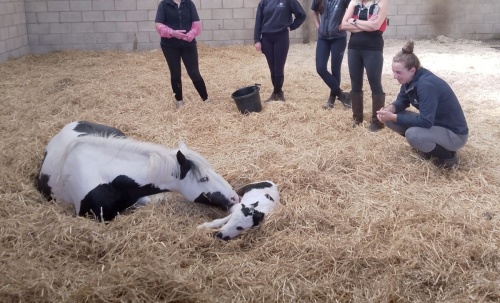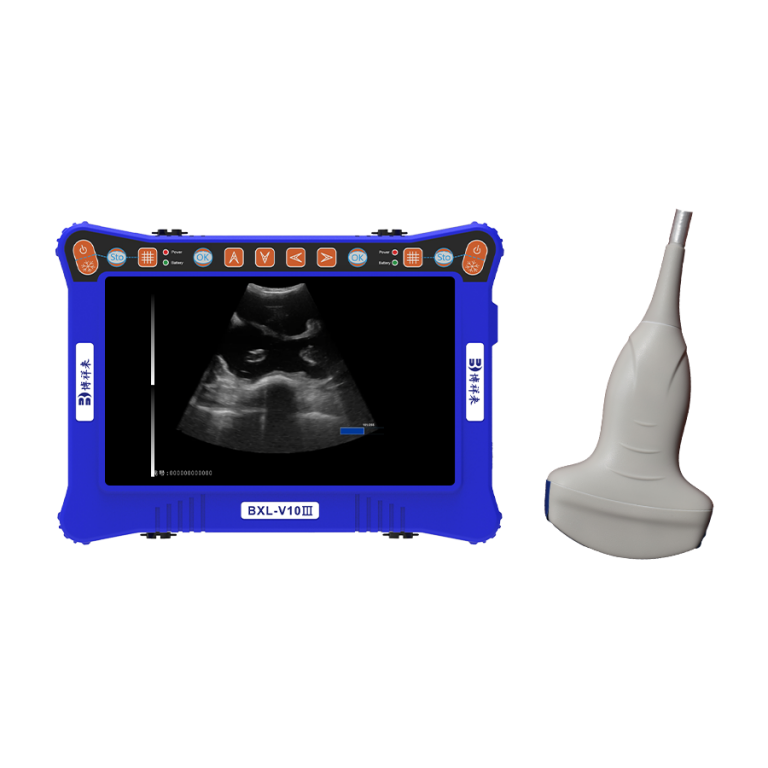Risk Factors Associated with Premature Births in Pregnant Horses
Premature birth, also known as preterm foaling, is a significant concern in equine reproduction, with potentially devastating outcomes for both the mare and the foal. Defined as delivery before 320 days of gestation, premature foaling in horses is associated with high neonatal mortality, compromised immunity, underdeveloped organs, and increased veterinary care costs. For breeders, veterinarians, and horse owners, understanding the risk factors leading to premature births is essential not only for prevention but also for informed management of pregnancies.

In this article, we examine the most common causes and contributing conditions linked to premature foaling in horses. Drawing from veterinary research and practical insights from international equine practices, we aim to offer a readable, evidence-based overview that highlights the importance of early detection, stable management, and modern veterinary tools such as ultrasound in mitigating risk.
Understanding the Normal Equine Gestation
The average gestation period for a horse ranges from 320 to 362 days, with most mares foaling around day 340. However, unlike many other livestock species, horses exhibit a wider variability in gestation length, which depends on breed, environmental conditions, nutrition, and fetal gender. Foals born before 320 days are generally considered premature, while those between 300–320 days are deemed “dysmature”—born near term but physically immature.
While mild dysmaturity can sometimes resolve with intensive neonatal care, severe prematurity presents critical risks: underdeveloped lungs, poor thermoregulation, weak joints and tendons, and compromised passive immunity due to inadequate colostrum absorption. Therefore, identifying and managing predisposing factors is vital for equine reproductive success.
Infectious Causes of Premature Birth
One of the most significant risk factors for premature births in horses is infectious disease, particularly placentitis. Placentitis is an inflammation of the placenta typically caused by ascending bacterial infections from the mare’s reproductive tract, most commonly involving pathogens such as Streptococcus zooepidemicus, E. coli, and Pseudomonas spp. The inflammation can lead to placental detachment, fetal growth retardation, and ultimately premature labor.
Ultrasonographic monitoring of the placenta—especially the combined thickness of the uterus and placenta (CTUP) at the cervix—is widely used in international practice. Increases in CTUP, placental edema, or separation visible on transrectal ultrasound can indicate early-stage placentitis. According to veterinarians in the U.S. and Europe, consistent scanning with modern veterinary ultrasound systems allows earlier intervention with antibiotics, anti-inflammatory drugs, and progesterone to prolong gestation and improve outcomes.
Non-Infectious Risk Factors
While infection is the leading medical cause, several non-infectious factors also contribute to premature births in mares.
1. Twin Pregnancies
Twin pregnancies in horses almost always end in abortion or premature delivery. The equine uterus is not designed to support more than one fetus to term. Most twin pregnancies, especially if undiagnosed early, will result in one or both foals being born preterm or stillborn.
Routine early ultrasound scanning—preferably between days 14 and 16 post-ovulation—is considered standard in countries with advanced equine breeding programs like Australia, the UK, and the U.S. When twins are detected, one embryo is usually manually reduced to prevent loss of the pregnancy.
2. Poor Body Condition and Nutrition
Mares in poor body condition or with unbalanced nutrition are at higher risk of preterm labor. Both overfeeding and underfeeding can negatively affect fetal development. International veterinary literature emphasizes the importance of trace minerals like selenium and copper, protein intake during mid to late gestation, and body condition scoring as tools to manage reproductive outcomes.
In many Western breeding operations, ultrasound is also used to monitor fetal growth and placental integrity throughout gestation to detect intrauterine growth restriction (IUGR), which is often associated with malnutrition and can precede premature delivery.
3. Stress and Environmental Changes
Transport stress, sudden weather changes, prolonged isolation, or competition activity during pregnancy may increase cortisol levels in pregnant mares, potentially triggering early labor. In North America, it’s common for breeding farms to recommend minimal stress environments in the last trimester, and for late-gestation mares to be kept in familiar surroundings with stable social groups.
Veterinary professionals in Europe often utilize fetal heart rate monitoring via Doppler ultrasound in late pregnancy to assess fetal stress, combined with behavioral observation of the mare to reduce the risk of foaling complications.

Hormonal and Endocrine Disorders
Endocrine imbalances, particularly in progesterone production, can contribute to poor uterine quiescence and preterm labor. A deficiency in progesterone—the hormone responsible for maintaining pregnancy—may cause premature uterine contractions or cervical softening.
In many foreign equine hospitals, especially in the U.S. and Germany, serial blood progesterone monitoring combined with ultrasonography of the cervix is standard in high-risk mares. Supplementation with synthetic progestins like altrenogest is a common preventive strategy when low levels are detected.
Fetal Abnormalities
Certain congenital defects and developmental anomalies in the fetus can also lead to spontaneous abortion or early delivery. While some abnormalities are genetically based, others stem from uterine environment issues or viral infections during gestation. In such cases, the fetus may fail to signal appropriate hormonal cues for pregnancy maintenance.
Advanced imaging tools such as transabdominal ultrasound or 3D fetal imaging are increasingly being used in major breeding centers in countries like the U.S., UAE, and France to monitor fetal movement, organ development, and amniotic fluid volume. These parameters help identify early signs of fetal distress.
Management Strategies to Prevent Premature Births
Prevention requires a multi-pronged approach, combining veterinary monitoring, nutritional management, and stable husbandry practices.
Routine Ultrasound Monitoring
Regular ultrasound exams remain the cornerstone of preventive reproductive care in pregnant mares. In particular, the use of B-mode ultrasonography allows visualization of fetal position, fluid volumes, CTUP, and placental attachment, while Doppler ultrasound can assess blood flow and fetal viability.
Many veterinarians recommend monthly scans starting at 5 months of gestation and increasing frequency as the due date approaches, especially in mares with previous reproductive issues.
Early Diagnosis of High-Risk Conditions
By combining hormonal testing, physical examination, and ultrasonographic imaging, it is possible to identify high-risk pregnancies early and implement protocols such as:
-
Antibiotics and anti-inflammatory therapy for placentitis
-
Embryo reduction for twins
-
Hormonal supplementation for progesterone deficiency
-
Nutritional adjustments for mares in suboptimal body condition
These proactive measures are widely practiced in international breeding farms and endorsed by veterinary associations such as the American Association of Equine Practitioners (AAEP).
Global Perspectives: Insights from International Equine Practice
Veterinarians and breeders across countries share common concerns, but their practices vary based on local resources, climate, and economic conditions.
-
United States: The use of handheld ultrasound devices has grown, allowing on-farm fetal monitoring and early risk detection. Telemedicine and remote consultation are also gaining popularity.
-
Europe: There is a strong emphasis on hormone monitoring and preventive scanning in warmblood breeding, with integration of ultrasonography in all phases of gestation.
-
Australia & New Zealand: Twin pregnancy management and nutrition-based strategies are key focuses in Thoroughbred breeding programs, where high foal survival rates are critical.
-
Middle East: In regions with high-value Arabian horse breeding, advanced reproductive technologies like embryo transfer and 3D fetal monitoring are routinely used.
These practices illustrate that while risk factors may be universal, successful prevention of premature birth requires localized and adaptive management.
Conclusion
Premature births in pregnant horses are complex events influenced by a variety of infectious, hormonal, environmental, and management-related factors. Through timely detection using veterinary ultrasonography, particularly transrectal and Doppler scanning, equine professionals can intervene effectively to prolong gestation and improve neonatal survival.
As equine veterinary science advances globally, more farms are adopting structured pregnancy monitoring protocols, emphasizing the importance of diagnostic imaging, hormonal assessment, and preventive care. For breeders and veterinarians alike, understanding and managing these risk factors is critical to safeguarding both mare and foal, ensuring the long-term success of equine breeding operations.
References:
-
LeBlanc, M. M. (2010). “Monitoring high-risk pregnancies in mares.” Theriogenology, 74(5), 773–781. https://doi.org/10.1016/j.theriogenology.2010.04.017
-
American Association of Equine Practitioners (AAEP). “Premature and Dysmature Foals.” https://aaep.org
-
Bailey, C. S., & Macpherson, M. L. (2012). “Placentitis in mares.” Equine Veterinary Education, 24(2), 102–108. https://doi.org/10.1111/j.2042-3292.2011.00289.x
-
Smith, K. C., & Blanchard, T. L. (2016). “Ultrasound imaging in equine reproduction.” Veterinary Clinics of North America: Equine Practice, 32(2), 275–290. https://www.sciencedirect.com/science/article/abs/pii/S0749073916300031
-
Giguère, S. (2018). Equine Neonatal Medicine: Diagnosis and Management. Elsevier Health Sciences.





